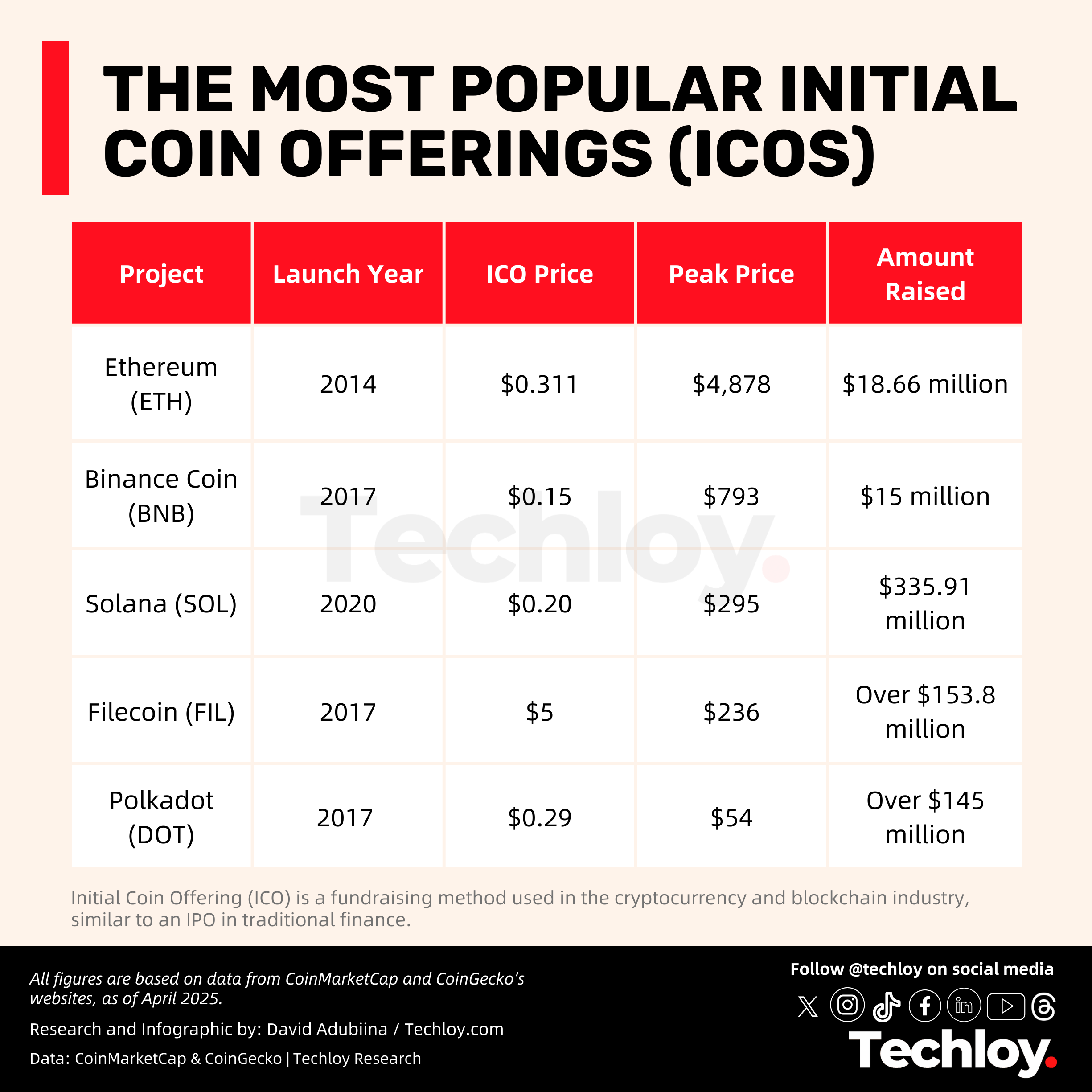
💡
TL;DR – Initial Coin Offering (ICO) is a fundraising method used in the cryptocurrency and blockchain industry, similar to an IPO in traditional finance.
Probably you’ve been wondering how smart money investors make life-changing profits in crypto while you only manage to earn just enough to stay afloat. You’ve bought the dips, followed influencers, and even joined various Telegram groups, but somehow, you’re still not in on the real action.
One fact most people overlook is that the crypto space moves fast. And those who get in early, before the hype and even before the headlines, often walk away with the biggest wins.
So, how do they do it?
They understand one powerful tool in the crypto playbook: the Initial Coin Offering (ICO).
What Is an ICO (Initial Coin Offering)?
Think of an ICO (Initial Coin Offering) as the crypto version of a startup asking for funding, but instead of selling shares like in the stock market (like with an Initial Public Offering), they sell digital tokens.
These tokens can later be used in the company’s project, traded for profit, or held long-term, just like early shares in Amazon or Apple once were.
In simple terms, it’s a way for a crypto project to raise money before it officially launches. And for early investors (like you), it’s a way to get in before everyone else hears about it.

How does it work?
First, a crypto startup creates a whitepaper – think of it as their pitch deck. It explains what the project is about, how much money they need, how many tokens they’ll release, and how those tokens will be used.
Once that’s set, the team announces their ICO date, sets a token price, and opens it up to the public.
Investors like you and me can buy those tokens using established cryptocurrencies like Bitcoin or Ethereum. In return, we get the project’s tokens sent straight to our wallets.
These tokens could:
- Give access to a future product,
- Offer utility within the platform, or
- (In some cases) increase in value if the project succeeds.
Unlike IPOs, though, ICOs aren’t always regulated. That means while the profit potential is huge, the risks are real. Some countries require KYC checks, while others have banned ICOs altogether.
So, while ICOs can be goldmines, always DYOR (Do Your Own Research) before diving in.
Some Examples of Popular ICOs
While some ICOs fizzled out, others delivered massive gains. Here’s a look at the ones that made early investors seriously rich.

What it takes to launch an ICO
Launching an ICO isn’t just about minting tokens and hoping for the best. You need a solid foundation.
Here’s what most teams put in place:
- A strong whitepaper – This is the backbone of your ICO. It must clearly explain your project, token utility, roadmap, and funding goals.
- A working website and wallet integration – So people can learn about the project and easily buy tokens.
- A smart contract – Usually built on Ethereum (ERC-20), this handles token distribution and transactions securely.
- Marketing strategy – Without buzz, nobody’s buying. Teams often build hype on Twitter, Telegram, Reddit, and crypto forums.
- Legal compliance – Depending on the country, you might need to register, follow KYC/AML rules, or avoid certain regions altogether.
It’s a mix of tech, trust, and timing. Get it right, and you could raise millions. Get it wrong, and you’ll be ghosted by investors.
Conclusion
ICOs have proven to be both golden opportunities and cautionary tales in the crypto space. For early believers, they’ve turned spare change into small fortunes. But for the uninformed, they’ve been expensive lessons. The key lies in understanding what you’re investing in.
If you’re thinking of jumping into the next big ICO, remember this: research is your best friend, hype is your biggest trap, and timing is everything. So, stay sharp, stay curious, and as always in crypto, never invest more than you’re willing to lose.








